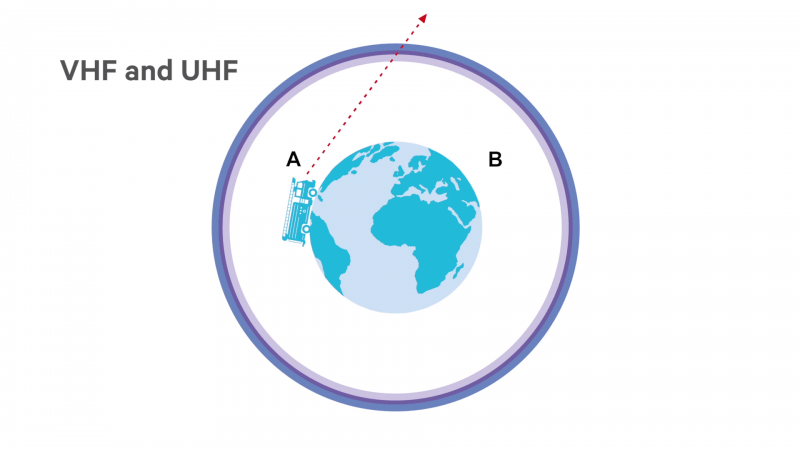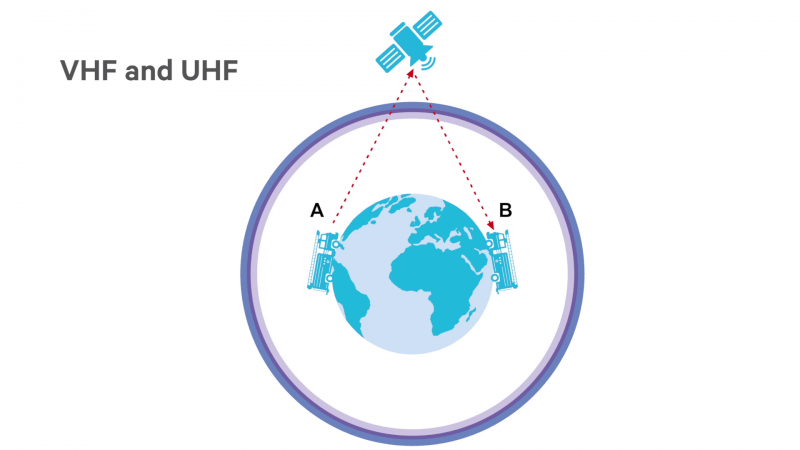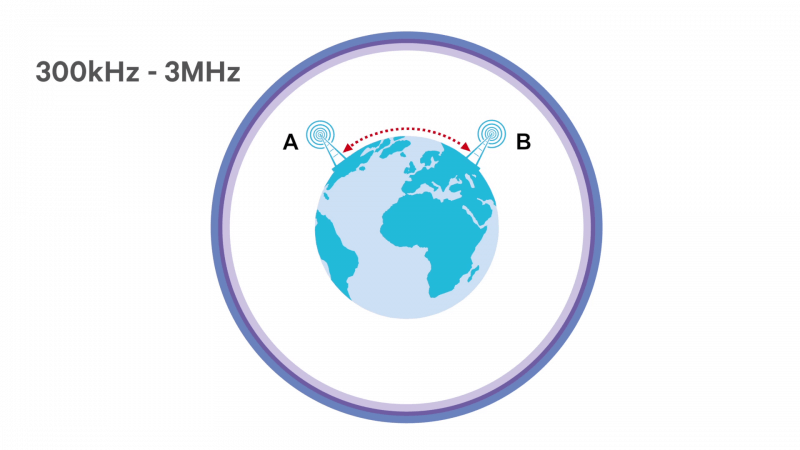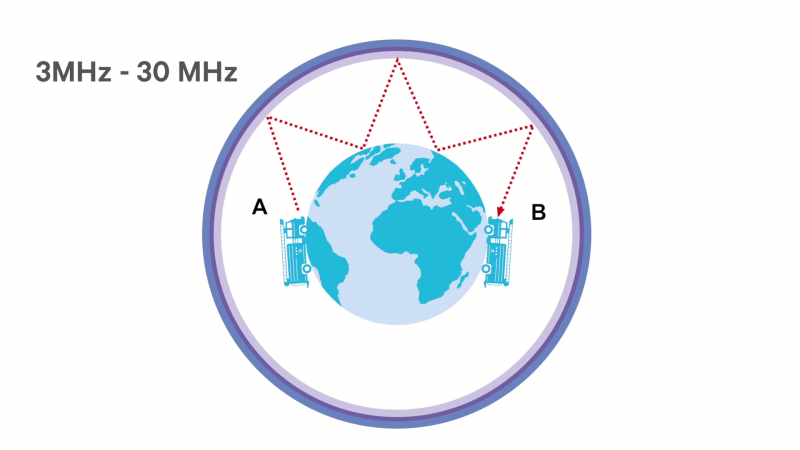Basic Radio Awareness
Introduction to Radio Communications Principles
What is propagation?
It’s useful when thinking about radio waves to think about light waves.
Light travels in rays, and radio waves do the same thing. It is called radio propagation. When white light goes into a prism it is separated by wavelength into red, orange, yellow, green, blue, and violet. In the same way, radio waves are going to propagate differently depending on their wave length. Radio wave lengths are much bigger than light wave lengths.
Look at propagation of radio rays traveling in order to communicate with users who are in different parts of the world, using (in radio terms) part of the VHF (Very High Frequency) spectrum. Radio that is in the VHF band travels in a straight line. In other words, the rays travel using line of sight.

If two users on the opposite side of the world want to communicate, the radio wave cannot use line of sight propagation, because it travels in a straight line and will not go around the curve of the earth. So, the solution for contacting somebody who’s over the curved horizon is to put a satellite up, and the satellite will receive the signal from the radio caller, and then transmit it in another straight line, line of sight, to the person receiving it at the other end.

UHF (Ultra High Frequency) which, for example, would be 400 MHz, operates in exactly the same way. In longer wave lengths of radio, however, the propagation is different.
For example, in lower short wave, which is around 300 kHz to 3 MHz, the radio propagation or radio wave can actually curve itself around the horizon or the curvature of the Earth.

In higher short wave, which is what people in the 40s and 50s used to listen to when they wanted to hear international broadcasts, the properties are different again. The radio propagation is going to do an interesting exercise. First it bounces off a top layer of the atmosphere called the ionosphere, then it bounces back to the Earth (this is reflection. It then bounces up again to the ionosphere, and continues bouncing back again until it reaches the radio receiver. This is called a skywave, which works around 3 to 30 MHz.

Radio propagation, like other radio properties, can depend critically on radio wavelength.
 Radio Academy
Radio Academy





